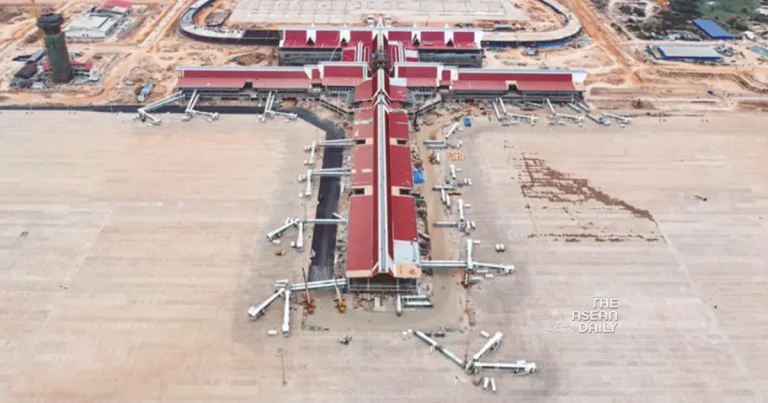16-10-2023 (PHNOM PENH) Siem Reap Angkor International Airport, a grand aviation project backed by Chinese investors, marked a historic moment as it proudly welcomed its inaugural flight on Monday. Sprawled across an extensive 700 hectares of land, this state-of-the-art airport is strategically nestled in the heart of Sotr Nikum district, just about 40 kilometres away from the UNESCO-listed Angkor Archaeological Park, and a mere 50 kilometres from the vibrant Siem Reap provincial town.
With its official moniker being the Siem Reap–Angkor International Airport (IATA: SAI, ICAO: VDSA), this international gateway proudly takes its place in the picturesque Soutr Nikom District of Siem Reap province. Not only does it serve the bustling city of Siem Reap, but it also significantly impacts the aviation landscape of western Cambodia. Positioned 18 kilometres northeast of Damdek, 40 kilometres east of the iconic Angkor Wat, and 50 kilometres east of Siem Reap, this airport is poised to usurp the current Siem Reap International Airport as the primary aviation hub for the city and, in the grand scheme of things, become the largest airport in the country.
The saga of this colossal construction endeavor commenced in July 2018, with initial projections pointing towards a completion date around 2021 or 2022. However, as with many global projects, the unforgiving specter of the COVID-19 pandemic, along with labor shortages and restrictions, reared their heads, necessitating a rescheduled opening date. Consequently, the airport’s grand unveiling was pushed to October 16, 2023.
The genesis of this ambitious airport project was spurred by the pressing need to cater to surging demands and escalating air traffic. The existing Siem Reap International Airport had already strained under the weight of over 10 million passengers annually, making it imperative for the Cambodian government to chart a new course. This new airport venture, initially proposed in 2010, found its savior in December 2016 when the Chinese juggernaut, Yunnan Investment Holdings Limited, was entrusted with the monumental task of building it.
Another compelling factor that added urgency to the airport’s construction was the findings of a research study conducted by a team of experts. Alarming revelations uncovered that the prevailing air pollution at the existing airport was posing a grave threat to the Angkor Wat Temple Complex. If this perilous trajectory remained unaltered, it could potentially lead to the erosion of priceless scriptures, carvings, and even the structural integrity of the entire complex. Consequently, upon the new airport’s completion, all commercial flights will be systematically diverted from the current airport to the pristine facility.
The development of the airport has been meticulously segmented into three distinct phases, sporting a monumental price tag of US$880 million. Spanning a vast area of 750 hectares, this airport boasts an array of facilities, including a passenger terminal that is adorned with 15 aerobridges, a dedicated cargo terminal, a formidable Air Traffic Control (ATC) Tower, an expansive 3,605-meter runway, and a parallel taxiway, among other ancillary infrastructure. In its maiden phase, the terminal is optimally equipped to handle an impressive 5-7 million passengers annually.
The airport’s runway capabilities are equally awe-inspiring. In the second phase of its development, the runway will be expanded to accommodate wide-body aircraft, including the likes of Boeing 747, Boeing 777, Boeing 787, Airbus A330, and Airbus A350. This will catapult the airport’s annual capacity to an impressive 10 million passengers by the year 2030. In the final, grand phase of expansion, the airport is anticipated to reach an astounding annual capacity of over 20 million passengers by the year 2050. Furthermore, an airport expressway is on the horizon, providing seamless connectivity between the airport and the city, promising travellers a hassle-free transportation experience.




